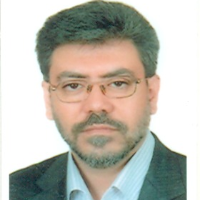A hybrid method to improve Steganography in JPEG images using metaheuristic algorithms
This paper presents a method for improving steganography and enhancing the security using combinatorial Meta-heuristic algorithms. The goal is to achieve an improved PSNR value in order to preserve the image quality in the steganography process. Steganography algorithms, in order to insert message signal information inside the host data, create small changes based on the message signal in the host data, so that they are not visible to the human eye. Each cryptographic algorithm has two steps: insert a stego signal and extract it. You can use the area of the spatial or transformation area to insert the stego signal. Extraction can be done using the correlation with the original watermark or independently of it. Clearly, the choice of insertion method and how to extract are interdependent. In spatial techniques, information is stored directly in pixel color intensity but in the transform domain, the image is initially converted to another domain (such as frequency), and then the information is embedded in the conversion coefficients. Using optimization algorithms based on Metahuristic algorithms in this field is widely used and many researchers have been encouraged to use it. Using a suitable fitness function, these methods are useful in the design of steganography algorithms. In this research, seven commonly used Metahuristic algorithms, including ant colony, bee, cuckoo search, genetics, Particle Swarm Optimization, Simulated Annealing and firefly were selected and the performance of these algorithms is evaluated individually on existing data after being applied individually. Among the applied algorithms, cuckoo search, firefly and bee algorithms that have the best fitness function and therefore the highest quality were selected. All 6 different modes of combining these 3 algorithms were separately examined. The best combination is the firefly, bee and cuckoo search algorithms, which provides a mean signal-to-noise ratio of 54.89. The proposed combination compared to the individual algorithms of optimization of ant colony, bee, cuckoo search, genetics, Particle Swarm Optimization, Simulated Annealing and firefly, provides 59.29, 29.61, 37.43, 52.56, 54.84, 57.82, and 3.82% improvement in the PSNR value.
-
A Data-Deriven Model for Forensic Policy Making in Electronic Banking Using Agent-Based Simulation
Afshin Khodamoradi, *, Mohammadali Afshar Kazemi
Management Strategies and Engineering Sciences, Winter 2025 -
Comparison of Personal Data Protection Laws: Unique General Regulations under the European Union's General Data Protection Regulation (GDPR) and United States Laws
Morteza Mahmodi Parchini, Ladan Riazi *, Alireza Pour Ebrahimi
Journal of News Sciences,


